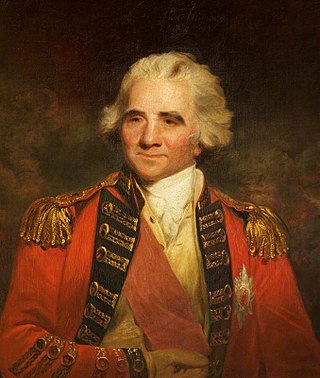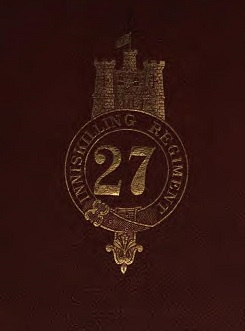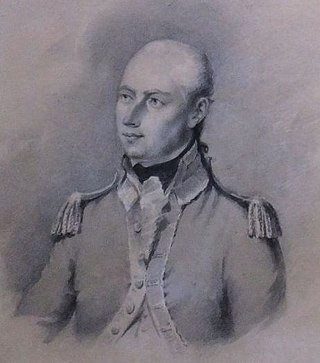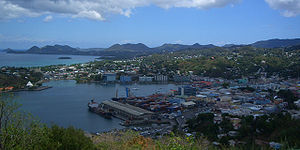
Lieutenant General Sir Ralph Abercromby was a Scottish soldier and politician. He rose to the rank of lieutenant-general in the British Army, was appointed Governor of Trinidad, served as Commander-in-Chief, Ireland, and was noted for his services during the French Revolutionary Wars, ultimately in the Egyptian campaign. His strategies are ranked amongst the most daring and brilliant exploits of the British army.

Saint Lucia is a constitutional monarchy and an island country of the West Indies in the eastern Caribbean. The island was previously called Iouanalao and later Hewanorra, names given by the native Arawaks and Caribs (respectively), two Amerindian peoples. Part of the Windward Islands of the Lesser Antilles, it is located north/northeast of the island of Saint Vincent, northwest of Barbados and south of Martinique. It covers a land area of 617 km2 with an estimated population of over 180,000 people as of 2018. The nation's capital and largest city is Castries.

Saint Lucia was inhabited by the Arawak and Kalinago Caribs before European contact in the early 16th century. It was colonized by the British and French in the 17th century and was the subject of several possession changes until 1814, when it was ceded to the British by France for the final time. In 1958, St. Lucia joined the short-lived semi-autonomous West Indies Federation. Saint Lucia was an associated state of the United Kingdom from 1967 to 1979 and then gained full independence on February 22, 1979.

Castries is the capital and largest city of Saint Lucia, an island country in the Caribbean. The urban area has a population of approximately 20,000, while the eponymous district has a population of 70,000, as at May 2013. The city covers 80 km2 (31 sq mi).

Jean-Baptiste Victor Hugues sometimes spelled Hughes was a French politician and colonial administrator during the French Revolution, who governed Guadeloupe from 1794 to 1798, emancipating the island's slaves under orders from the National Convention.

The 27th (Inniskilling) Regiment of Foot was an Irish infantry regiment of the British Army, formed in 1689. Under the Childers Reforms it amalgamated with the 108th Regiment of Foot to form the Royal Inniskilling Fusiliers in 1881.

Pigeon Island is a 44-acre (180,000 m2) islet located in Gros Islet in the northern region of Saint Lucia. Once isolated from the country in the Caribbean Sea, the island was artificially joined to the western coast of mainland in 1972 by a man-made causeway built from dirt excavated to form the Rodney Bay Marina. Composed of two peaks the island is a historic site with numerous forts such as an 18th-century British fort and Fort Rodney both used by the British to spy on French Ships from neighbouring Martinique. In 1979 it was named a national park and again in 1992 it became a national landmark under the control of the Saint Lucia National Trust (SLNT). Today, Pigeon Island is the home and major venue of the Saint Lucia Jazz Festival.

The British expedition against Martinique was a military action that took place in January and February 1762. It was part of the Seven Years' War.

Fort Saint Louis is a seaside fortress in Fort-de-France, Martinique. The present-day fort has evolved from earlier strongholds that were erected on the site as early as 1638, and has been known in previous incarnations as Fort Royal and Fort de la Republique. The modern-day Fort Saint Louis is both an active naval base and a listed historic site of France. There are daily tours of the fort, though the portion that is still a naval base is off-limits.

The Invasion of Tobago was a French invasion of the British-held island of Tobago during the Anglo-French War. On May 24, 1781, the fleet of Comte de Grasse landed troops on the island under the command of General Marquis de Bouillé. By June 2, 1781, they had successfully gained control of the island.

Government House is the official residence of the governor-general of Saint Lucia. It is also the official residence of the head of state of Saint Lucia when staying in Saint Lucia. The house is located on the crest of Morne Fortune, near Castries.

Elias Durnford was a British army officer and civil engineer who is best known for surveying the town of Pensacola and laying out a city plan based on two public places.

The Capture of Grenada was an amphibious expedition in July 1779 during the American Revolutionary War. Charles Hector, comte D'Estaing led French forces against the British-held West Indies island of Grenada. The French forces landed on 2 July and the assault occurred on the night of 3–4 July. The French forces assaulted the British fortifications on Hospital Hill, overlooking the island's capital, Saint George's. The British cannons were captured and turned against Fort George. British Governor Lord Macartney opened negotiations to surrender.

The Capture of St Lucia was the result of a campaign from 18–28 December 1778 by British land and naval forces to take over the island, which was a French colony. Britain's actions followed the capture of the British-controlled island of Dominica by French forces in a surprise invasion in September 1778. During the Battle of St. Lucia, the British fleet defeated a French fleet sent to reinforce the island. A few days later French troops were soundly defeated by British troops during the Battle of Morne de la Vigie. Realising that another British fleet would soon arrive with reinforcements, the French garrison surrendered. The remaining French troops were evacuated, and the French fleet returned to Martinique, another French colony. St. Lucia stayed in the hands of the British.

Vigie is part of Castries, Saint Lucia.

Sister Mary Irma Hilger was an American religious sister, who trained as a nurse and founded the St. Jude Hospital and nurse's training school on the Caribbean island of St. Lucia. She has been called the "Florence Nightingale of St. Lucia".

Saint Lucian nationality law is regulated by the Saint Lucia Constitution Order of 1978, as amended; the Citizenship of Saint Lucia Act of 1979, and its revisions; and various British Nationality laws. These laws determine who is, or is eligible to be, a national of Saint Lucia. Saint Lucian nationality is typically obtained either on the principle of jus soli, i.e. by birth in Saint Lucia; or under the rules of jus sanguinis, i.e. by birth abroad to parents with Saint Lucian nationality. It can be granted to persons with an affiliation to the country, or to a permanent resident who has lived in the country for a given period of time through naturalisation. There is also, currently a program in Saint Lucia for persons to acquire nationality through investment in the country. Nationality establishes one's international identity as a member of a sovereign nation. Though it is not synonymous with citizenship, for rights granted under domestic law for domestic purposes, the United Kingdom, and thus the commonwealth, have traditionally used the words interchangeably.

General William Grinfield was a British Army officer who served during the French Revolutionary and Napoleonic Wars. Grinfield joined the 3rd Regiment of Foot Guards in 1760 and was promoted through the ranks, becoming a major in the regiment in 1786. In 1793 his regiment joined the Flanders Campaign, fighting at the siege of Valenciennes and Battle of Lincelles, during which time he was promoted to lieutenant-colonel. Having held a higher army-wide rank than he did regimental rank, Grinfield was promoted by seniority to major-general later in the same year.

Royal tours of Saint Lucia by its royal family have been taking place since the 20th century. Elizabeth II, Queen of Saint Lucia, visited the country twice; in 1966, and 1985.
The British campaign in the Caribbean took place during the first year of the Napoleonic Wars and began shortly after the breakdown of the Treaty of Amiens. Hostilities with France resumed in May 1803 but official notification did not arrive in the West Indies until mid-June, along with British orders to attack France's valuable sugar islands. The expedition, under commanders in chief William Grinfield and Samuel Hood, set out from Barbados on 20 June with 3,149 soldiers, two ships-of-the-line, two frigates, converted to troopships, and two sloops. St Lucia was captured on 22 June 1803, after the island's main fortress, Morne Fortunee had been stormed, and Tobago nine days later. After leaving men to hold these islands, the expedition returned to Barbados.




















